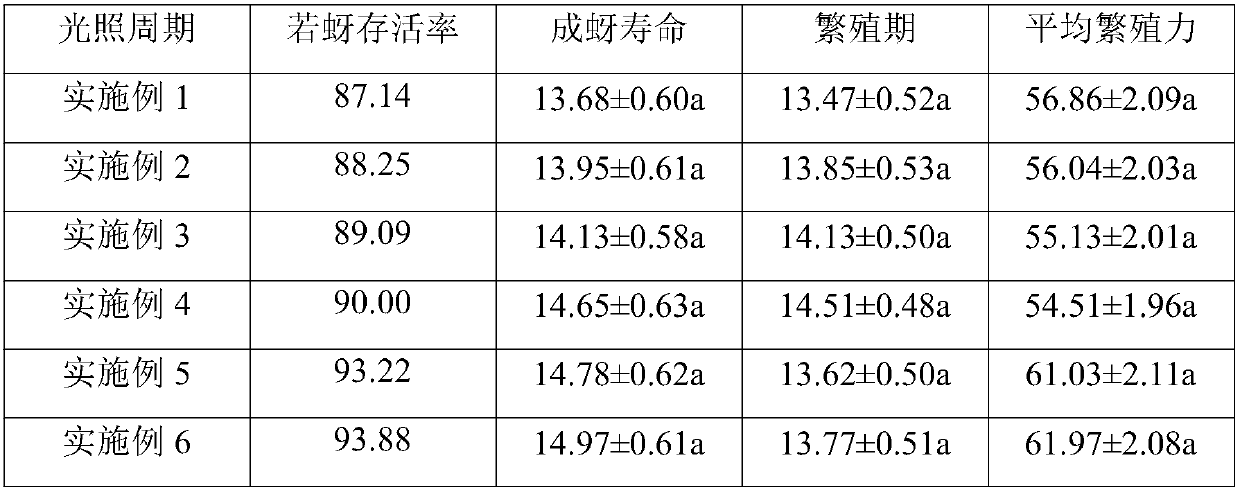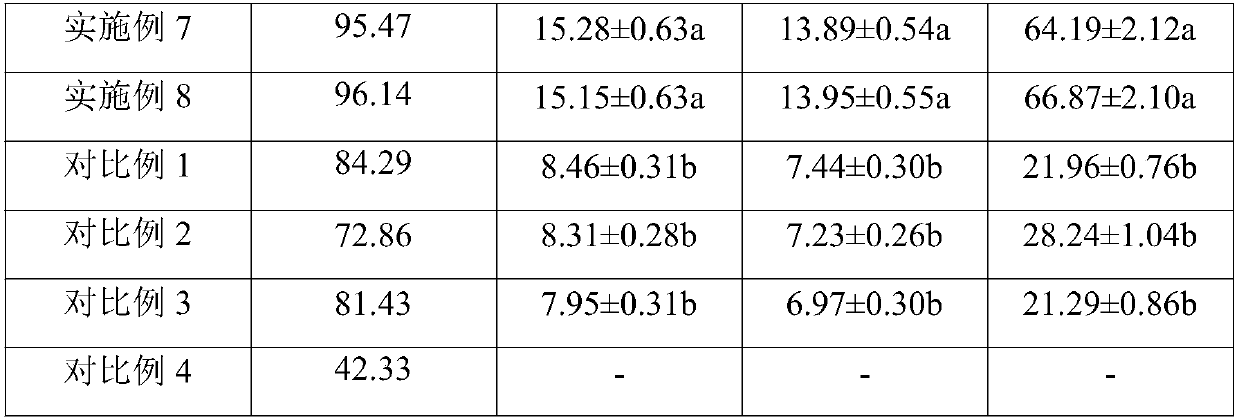Corn aphid breeding method suitable for breeding aphid-eating gall midges and application thereof
A technology for aphid-eating gall midges and aphids, which is applied in the field of artificial breeding of insects, can solve the problems of low annual breeding quantity of corn aphids, and achieve the effects of long lifespan and breeding period of adult aphids, growth promotion, and high survival rate
- Summary
- Abstract
- Description
- Claims
- Application Information
AI Technical Summary
Problems solved by technology
Method used
Image
Examples
Embodiment 1
[0022] The corn aphid feeding method suitable for the breeding of aphid gall midge described in the present embodiment comprises the following steps:
[0023] (1) Planting barley seedlings: plant barley in glass greenhouses according to conventional methods, and inoculate aphid larvae on the barley seedlings after 2 days after the emergence of barley seedlings, for subsequent use;
[0024] (2) Receive aphids: move the barley seedlings inoculated with aphids into the climate chamber, set up a wire mesh, put the barley blades with aphids on the wire mesh, and remove the old blades after one day;
[0025] (3) Control climate indoor temperature 24-26 ℃, relative humidity 60%-70%, photoperiod L13:D11, light intensity 3000lx, carry out the breeding of aphid, inoculate aphid larva again after aphid grows 7-8 days simultaneously, treat aphid When the density reaches 20 heads per leaf, it can be used for inoculation and breeding of aphid gall midges.
Embodiment 2
[0027] The corn aphid feeding method suitable for the breeding of aphid gall midge described in the present embodiment comprises the following steps:
[0028] (1) Planting barley seedlings: plant barley in glass greenhouses according to conventional methods, and inoculate aphid larvae on the barley seedlings after 3 days after the emergence of barley seedlings, for subsequent use;
[0029] (2) Receive aphids: move the barley seedlings inoculated with aphids into the climate chamber, set up a wire mesh, put the barley blades with aphids on the wire mesh, and remove the old blades after one day;
[0030] (3) Control climate indoor temperature 24-26 ℃, relative humidity 60%-70%, photoperiod L14:D10, light intensity 2000lx, carry out the breeding of aphid, inoculate aphid larva again after aphid grows 7-8 days simultaneously, wait for aphid When the density reaches 20 heads per leaf, it can be used for inoculation and breeding of aphid gall midges.
Embodiment 3
[0032] The corn aphid feeding method suitable for the breeding of aphid gall midge described in the present embodiment comprises the following steps:
[0033] (1) Planting barley seedlings: plant barley in glass greenhouses according to conventional methods, and inoculate aphid larvae on the barley seedlings after 3 days after the emergence of barley seedlings, for subsequent use;
[0034] (2) Receive aphids: move the barley seedlings inoculated with aphids into the climate chamber, set up a wire mesh, put the barley blades with aphids on the wire mesh, and remove the old blades after one day;
[0035] (3) Control climate indoor temperature 24-26 ℃, relative humidity 60%-70%, photoperiod L15:D9, light intensity 4000lx, carry out the breeding of aphid, inoculate aphid larva again after aphid grows 7-8 days simultaneously, wait for aphid When the density reaches 20 heads per leaf, it can be used for inoculation and breeding of aphid gall midges.
PUM
 Login to View More
Login to View More Abstract
Description
Claims
Application Information
 Login to View More
Login to View More - R&D
- Intellectual Property
- Life Sciences
- Materials
- Tech Scout
- Unparalleled Data Quality
- Higher Quality Content
- 60% Fewer Hallucinations
Browse by: Latest US Patents, China's latest patents, Technical Efficacy Thesaurus, Application Domain, Technology Topic, Popular Technical Reports.
© 2025 PatSnap. All rights reserved.Legal|Privacy policy|Modern Slavery Act Transparency Statement|Sitemap|About US| Contact US: help@patsnap.com


